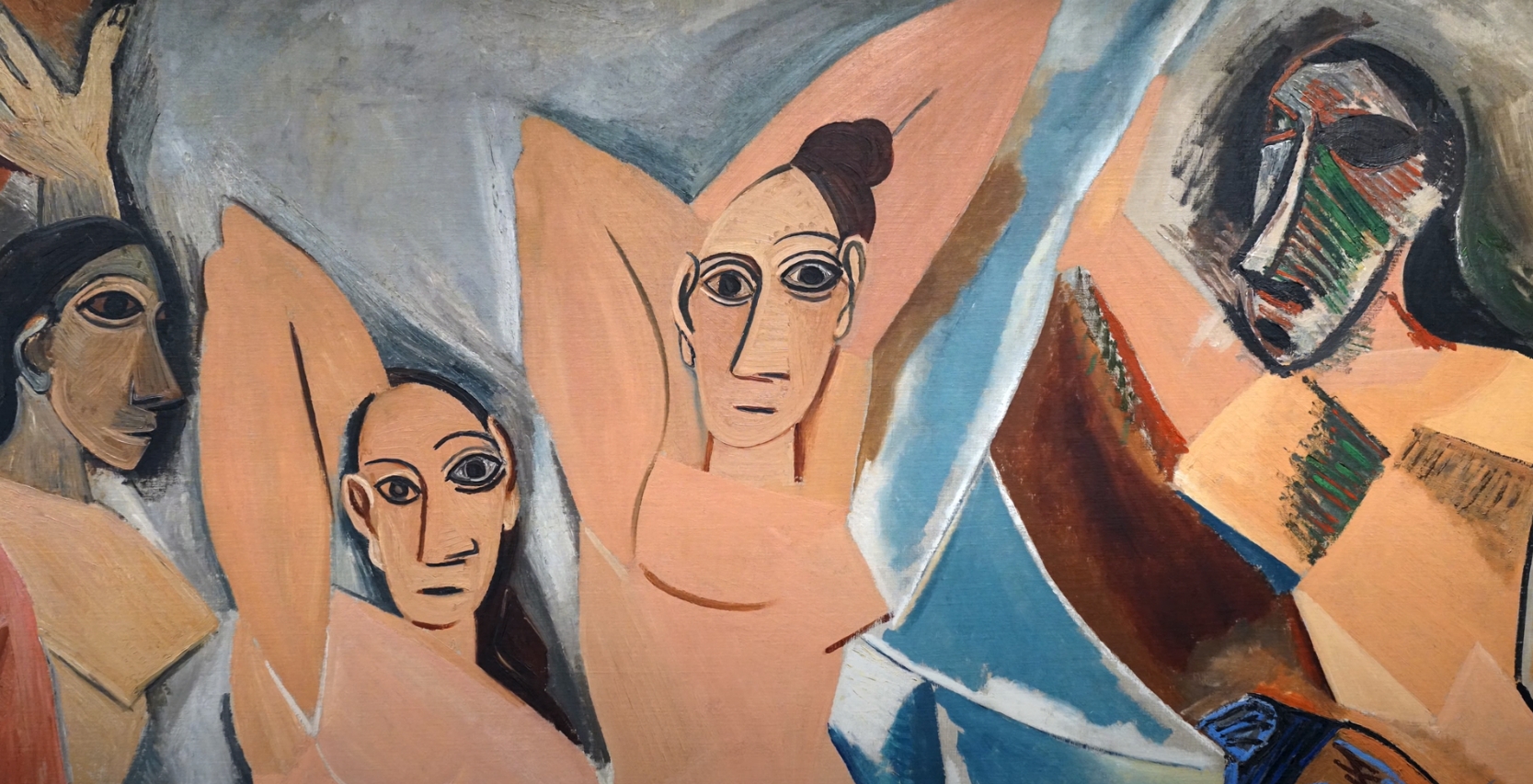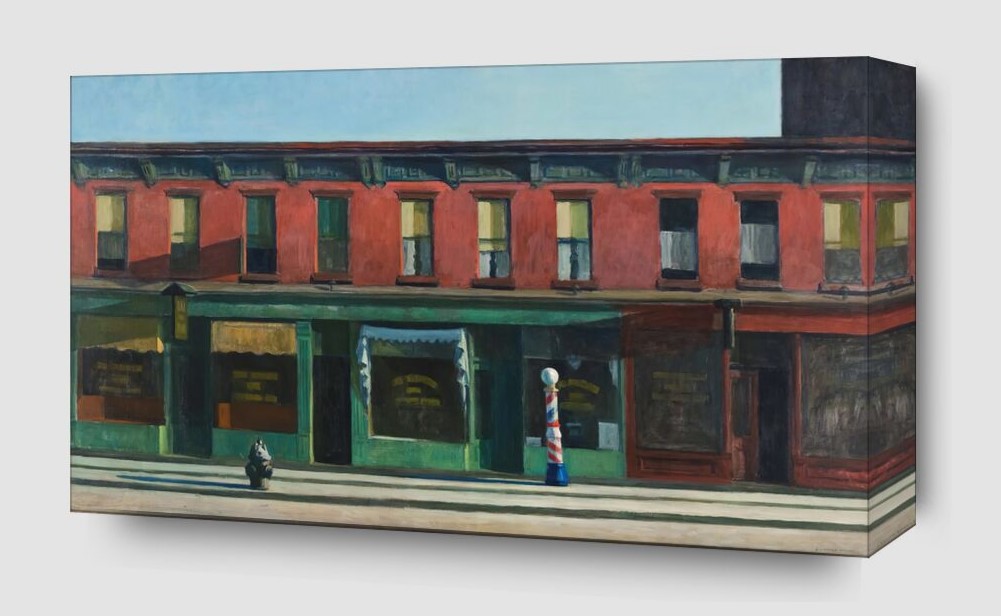Pablo Picasso, whose full name is Pablo Diego José Francisco de Paula Juan Nepomuceno Cipriano de la Santísima Trinidad Ruiz Picasso, was born in Malaga in 1881. This fact is crucial, because despite Picasso’s association with modernity and the avant-garde, his training was classical due to his birth in the late 19th century. Although he demonstrated artistic skills from a young age, Picasso began his artistic career in a classical manner, influenced by his father, an art teacher.
Table of Contents

Ladies of Avignon is recognized as one of the most significant works of 20th century art. A curious detail is that when hearing the title, many assume that Avignon is a French city, but in reality, it refers to a street in the old town of Barcelona, known as “Carrer de Avinyó”.
Before Ladies of Avignon
Picasso immersed in an intensive creative process, produced an unprecedented number of preparatory drawings and paintings for “Demoiselles”. These reflect his struggle to reinvent Western painting with stylistically disjunctive, spatially contradictory and aggressively confrontational elements. The title of the work, assigned during his first public exhibition, alludes to the prostitutes of Barcelona’s red light district, focusing on the psychosexual and erotic dimension of the work.
The Beginning of an Artistic History
Picasso’s connection to Barcelona began in 1895, when his family moved to the city. At the age of 14, Picasso continued his studies at La Llotja School of Fine Arts. Later, he moved to Madrid to study at the Royal Academy of San Fernando, but his disenchantment with academia led him to spend more time in museums, studying masters such as Velázquez, Goya and El Greco.
Two Poles of Picasso’s Career


In 1900, Picasso held his first solo exhibition at Les Quatre Gats, a place that gathered artists and intellectuals. Barcelona, at the end of the 19th century, was a city at its cultural and economic peak. However, in 1904, Picasso moved permanently to Paris, the epicenter of artistic modernity.
The Breaking Point in Paris
In Paris, Picasso settled in the Bateau-Lavoir studio, where he experimented with new techniques and styles. It was during this period that he created Ladies of Avignon, a work that broke with traditional canons. The painting, the product of an aesthetic search that spanned the years 1906-1907, depicts five women in a geometric and two-dimensional manner. It is considered the beginning of the cubist movement and a total break with spatial perspective and traditional anatomy.

Naked Avant-Garde of Ladies of Avignon
Pablo Picasso defies traditional artistic conventions with a monumental work that breaks new ground in composition and perspective. The painting presents five nude women in fragmented planes, with faces inspired by Iberian sculpture and African masks.

The compressed space projects forward in irregular fragments, while an overturned table at the bottom holds a still life with a wobbling melon. This bold creation was presented in Picasso’s Parisian studio after months of meticulous revision.
The Evolution of a Masterpiece
Although the work went unnoticed in its first exhibition, it was acquired by MoMA in New York in 1940, gaining importance over time. Les Demoiselles d’Avignon reflects Picasso’s youthful nights in Barcelona, especially his visits to brothels on Carrer de Avinyó.

Ladies of Avignon and the Legacy of Picasso

| Author: Pablo Picasso |
| Size: 243,9 cm × 233,7 cm |
| Year: 1907 |
| Technique: Oil on canvas |
| Style: Cubism |
| Location: The Museum of Modern Art, New York |
Les Demoiselles d’Avignon is a testimony of Picasso’s artistic journey from his classical training in Barcelona to his consecration as one of the most influential artists of the 20th century. The work represents the artist’s transition to the avant-garde and the beginning of the Cubist movement, marking a milestone in the history of art.
Other works by the artist:
[the-post-grid id=”3055″ title=”Las damas de aviyon”]



